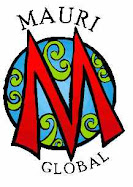Māori society was based on descent and on kinship groupings. All Māori could [can] whakapapa as descendants of atua. Whakapapa determined the membership, role and individual standing within each kinship group.
“My whakapapa, the most profound yet simplistic thing about me is absolute; there is not grey matter in it.” Chris Winitana, Timatanga Hou DVD, Mauri Ora programme teaching resources, © Kina Film Productions, 2004.
Whakapapa takes up the role of legitimating the spiritual and political obligations afforded to each individual through birth. It provides them with the right to participate in tribal and family affairs, provides access to collective assets, gives right to be buried in the local urupā [cemetery], allows succession to land interests of parents and to claim membership within the hapū [sub-tribe]. In short, whakapapa is belonging. Without it an individual is outside looking in.
FREE E-BOOK: LAYER UPON LAYER, Whakapapa



